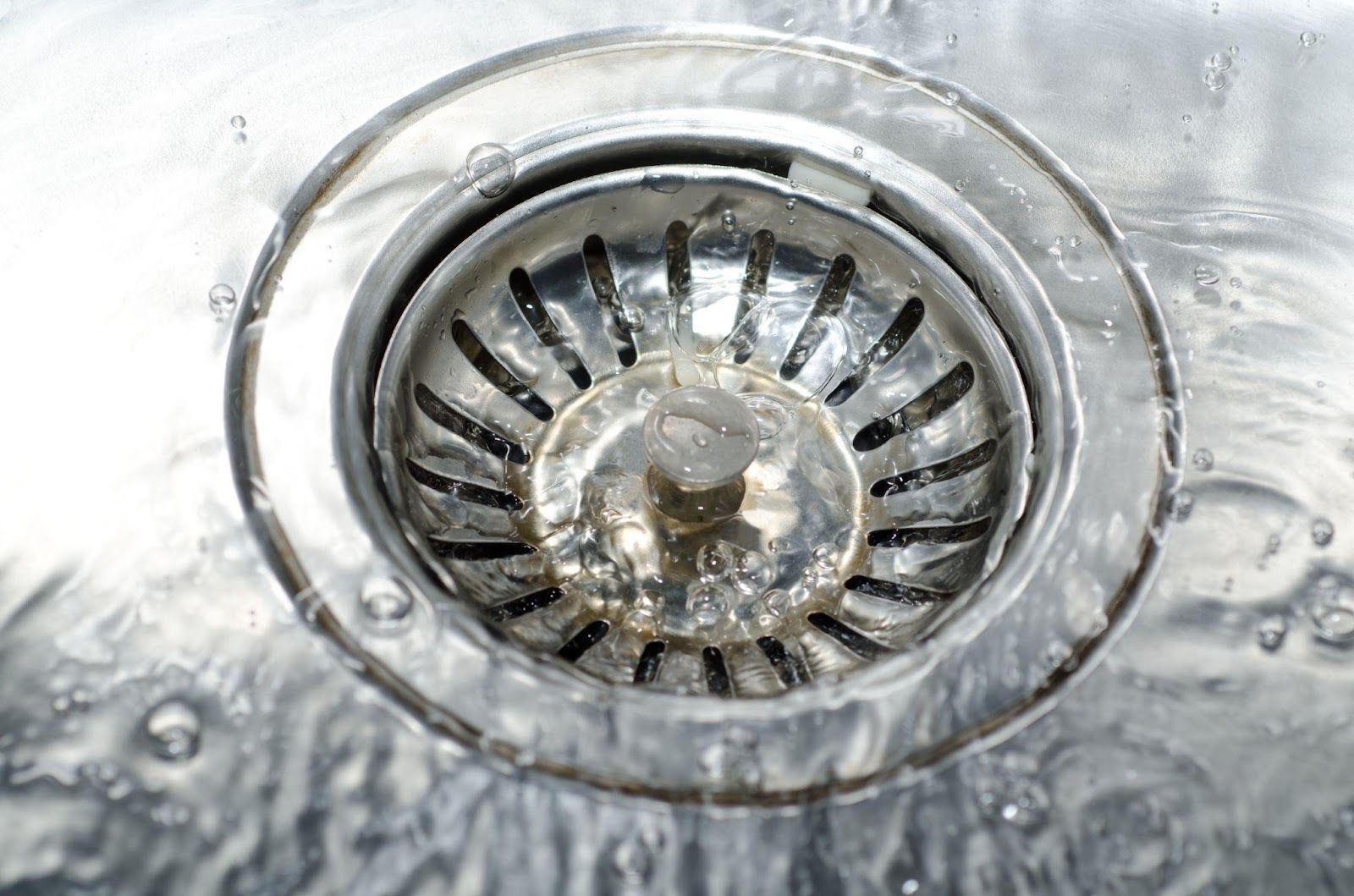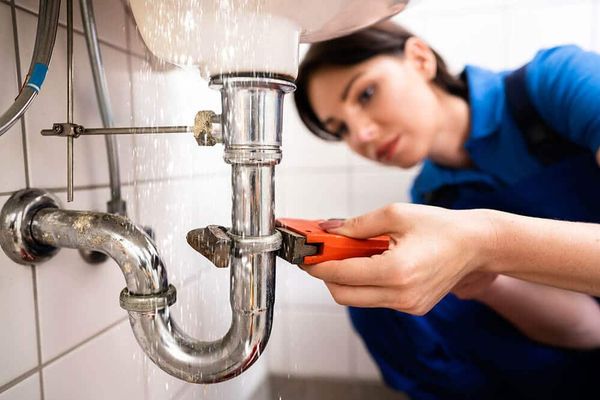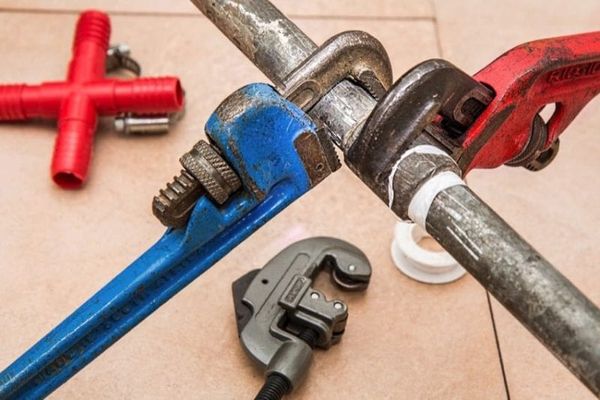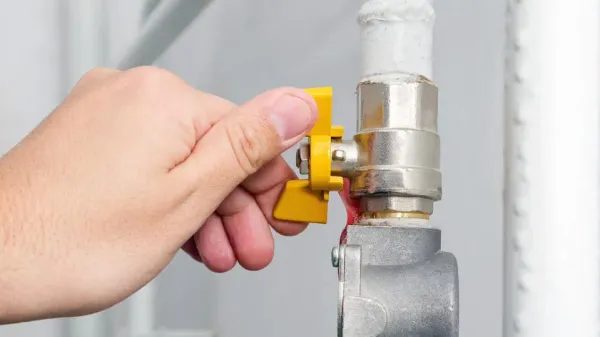We don’t often think about the snake-like drain pipes throughout and underneath our homes until one of them gets clogged.
Everyone, at some point, has to deal with a clogged drain. It could be minor obstructs that can be taken care of using plungers, or it could turn into something more serious. No matter the severity, it’s always a good idea to let the professionals handle clogged drains.
What Causes a Clogged Drain?
Drainage systems swallow up wastewater, floodwater, rainwater, and so on. The reason drain pipes get clogged up is due to a buildup of soap, food waste, dirt, toilet paper, small objects, and a common element: hair!
This reduces the flow of used water to seep down the drain becoming a nuisance for everyone using the sink, shower, or tub.
How Do I Fix My Clogged Drain?
Your best bet will be to call a professional to inspect the problem and let them handle the blocked situation. Why? Because they have the tools to clear the stubborn buildup of mold and dirt in your drainage systems.
If not addressed soon, this buildup of mold can lead to contaminated water and cause problems for people who suffer from asthma or allergies.
What Tools Do Professional Plumbers Use To Clear Clogged Drains?
Seasoned plumbers are equipped with various tools to remove stubborn grease, dirt, and mold from drain pipes. Here are ten common tools they use to clear out the tubes:
High-Definition Pipe Video Cameras
These high-definition video cameras are equipped with a flashlight and attached to a cable.
Leaks or improper attachments of pipes can be seen externally. It’s the insides of the pipe that need to be inspected. Randomly using a tool to clean the drain can result in pipe damage, especially if it’s an old pipe.
Therefore, an expert will insert and maneuver the cable camera to see what they are dealing with at the beginning. They will then be able to make a decision on which tools to use (and not to use) for a better cleanup.
Heavy-duty Plungers
The most common tool used to unclog drains is a plunger. These are used for light clogs, such as in sinks and shower drains.
Plungers are a plumber’s first tool of choice to unclog drains. If that doesn’t work, it’s a clear indication of a heavier and stubborn clog inside the pipe that requires a different tool to clear out.
If it’s a heavier clog, they might use a specialized flange plunger. It looks just like any other plunger but has an additional rubber flap attached to the dome of the plunger head.
Once sealing the hole of your toilet bowl, it provides an extra level of hydraulic pressure which is necessary to clear out large clogs.
Manual Drain Snakes
A drain snake is a staple tool in every expert’s toolbox. It consists of a long and flexible cable and coiled ends that look like a corkscrew.
This mechanism is attached to a handle that is cranked to insert the cable inside the drain pipe and pull up large obstructions such as food wastes, debris, hair, and foreign objects that block the tubes.
The cable works by navigating with twists and turns to reach deep clogs, which makes drain snakes an important tool for drain cleaning.
Motorized Snake
Motorized drain snakes run on the same principles as manual ones. The only difference is that it operates with the push of a button.
These motorized drain snakes are mainly used on larger pipes and stubborn clogs. The motor helps plumbers to plow through stubborn clogs that manual ones are unable to retrieve.
Hair Drain Snake
Hair is one of the main causes of drain blockages. An average human sheds 50 to 100 hair strands per day. And most of these end up down the drain.
A single strand is no biggie, but when it’s a multitude of strands, they get knotted up together, clogging the drain pipe, often frequently.
Luckily, hair drain snakes are one of the important tools in a plumber’s arsenal. It’s a flexible barbed wand that’s made of plastic and is soft enough to bend in many kinds of strainers and pipes.
These are good to clear hair obstructions and other garbage from kitchen and bathroom sinks and shower drains.
Drain Pipes Auger
Drain snakes and augers are basically the same, with one key difference. Drain snakes are used to deal with small and narrow pipes, whereas augers are designed to tackle the big ones, such as toilet and shower drains.
Water-jet Machines
Also known as jet blasting machines or hydro-jet machines, these are used for the most persistent of clogs. It consists of a long, flexible hose and a water pump.
These machines release water pressure of about 5000 psi and can break down drain buildup. It also removes residue, which prevents the likelihood of pipe damage.
This equipment is highly effective in removing stains, mineral deposits, and grease buildup inside the pipes and is also environmentally friendly, as no chemicals are needed to clear up the clogs.
The downside of using jet-blasting machines is that they may be damaging to the pipes. This machine can be used on certain types of plumbing pipes, and an expert will be able to distinguish it better.
Cable Cleaners
Cable cleaning machines have spinning blades that cut through clogs and obstructions in the pipe. These blades will help in taking out residue buildup; however, if it’s an old pipe, plumbers will pick other methods to clear out clogs.
Old pipes can be fragile, and cleaning them using high-end machines can further damage the tubes.
Cable cleaners have a number of models available, sectional and continuous cables, to name a few.
Sectional cables are where multiple cables are used, are shorter in length (about 15 feet), and operate faster and easier than others.
Continuous cables consist of one long cable, which ranges from 25 to 100 feet. This cable is typically wrapped within the machine, which makes it heavier and difficult to transport.
In comparison, continuous cables are less messy than sectional ones, so it really depends on what the user prefers to use for what purpose. And that is a decision only a skilled user will know.
Drain Cleaners
Chemical drain cleaners are used as a last resort. However, even then, some experts may not want to use it at all.
These chemical-induced drain cleaners are toxic and end up dissolving everything in their path. It also leaves a fume that may be harmful to health, especially if you or the members of your family suffer from allergies.
Additionally, these drain cleaners are also harmful to the environment. Rather than clearing out clogs, it may sear a hole in your pipe.
Therefore, a professional will exercise caution when using chemical drain cleaners and will always prioritize safety.
Non-chemical Drain Cleaners
Non-chemical drain cleaners consist of home remedies such as a mixture of hot water, vinegar, and baking soda. They might help clear out minor clogs and are technically a safer alternative than chemical ones. However, they might cause even more blockage if mishandled.
When To Call The Plumber?
For a smooth plumbing system, call a plumber when the following occurs:
No Water
There can be many reasons for not having water. Check the water utility company whether they are having problems with their supply. If not, then it’s a good idea to call an expert, as your water pipes may be frozen, clogged, leaking, or corroded.
Overflow of water
If you see your toilet overflowing, you may have a clogged drain. Flushing too much toilet paper or non-flushable objects may do this. Time to call your plumber!
Slow Draining of water
The most common way to determine whether you have a clogged drain is when your water drains slowly. Grease buildup or food waste can do that, and only an expert can come to your rescue.
Leaks
Hidden leaks can lead to low levels of water and can cause extensive damage to your walls and floors. Additionally, it will raise your water bills too. Check with your professional as soon as possible in this case.
Water damage
You will be able to see signs of water damage, such as a musty smell, wall discoloration, or a dripping sound from a leaky faucet. Call a plumber immediately, as leaving the issue as it is may result in mold growth.
Apart from when you are experiencing issues, it is a good rule of thumb to have your plumbing system checked out once every year.
A yearly home plumbing inspection can keep your house strong and well-maintained, not to mention saving you boatloads of money and the inconvenience of a clogged drain.
To Wrap It Up
Experts are well-versed in the appropriate use of the tools and possess a variety of equipment that helps in the removal of clog buildup in drain pipes.
From drain snakes and augers to jet-blasting machines for tough issues, these tools are crucial for a smooth flow of the plumbing system of your home.
Therefore, if you are faced with a clogged drain issue, call your plumber, who is armed with the right tools to get the job done quickly and safely.






